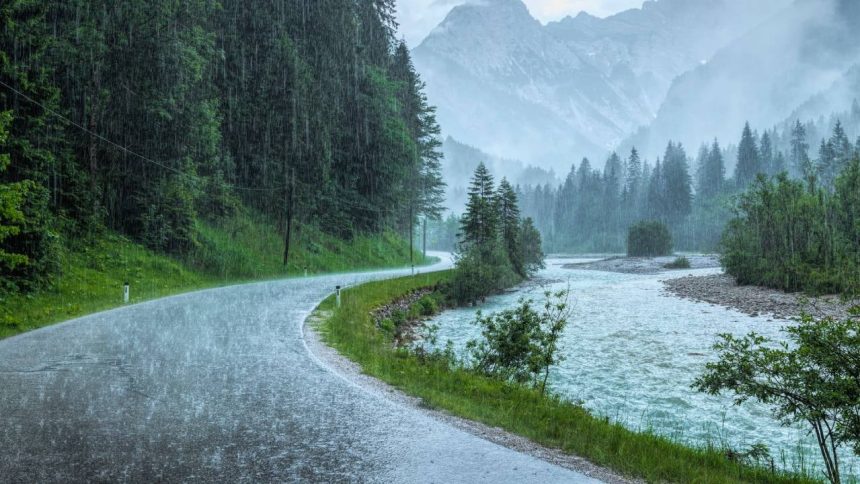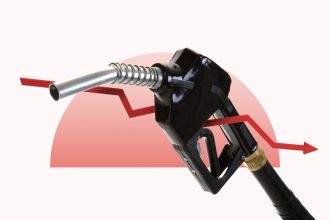Let’s face it, money can make life easier. Costs associated with extreme weather are busting the budgets of many homeowners, but those making less than $50,000 per year are feeling the pressure the most. Bankrate’s Extreme Weather Survey found that only 48 percent of homeowners with a household income below $50K per year say they are financially prepared for the potential costs associated with extreme weather events in their area, compared to 71 percent of homeowners earning $100K or more. As home insurance rates surge and coverage for extreme weather shrinks, homeowners with limited financial resources face increased financial vulnerability in high-risk zones.
How are U.S. homeowners with limited incomes financially impacted by extreme weather events?
Regardless of gender, race or political affiliation, we all collectively experience the impacts of extreme weather. However, the destructive forces of wildfires, tornadoes and other weather events show no bias in their path of devastation and the capacity to plan and bounce back from catastrophic loss is not shared equally. Limited personal finances affect nearly every aspect of safeguarding and rebuilding your home after a loss.
Bankrate’s Emergency Savings Survey found that 71 percent of U.S. adults with an annual income below $50,000 feel behind in their emergency savings. Preparing for a disaster can require unplanned purchases of building materials to protect your home and evacuation expenses, such as extra medication, gas, food and lodging. Lack of access to emergency funds before an impending weather event can kickstart a financial freefall that is hard to recover from.
Climate-resistant home modifications may help you find cheaper home insurance and reduce the risk of damage from extreme weather events. Depending on the natural hazards in your area, some of the most impactful upgrades, like raising the foundation of your home, may be cost-prohibitive for many homeowners.
According to our survey, 13 percent of homeowners with an annual income above $100K have invested in weather-proofing strategies to protect their property against damage from extreme weather events in the past five years. This is almost twice as many as homeowners earning below $50,000 (7 percent) and homeowners earning between $50,000 and $79,999 (7 percent).
Also, in the last five years, only 8 percent of homeowners earning below $50,000 and 11 percent of homeowners earning between $50,000 and $79,999 per year say they increased their existing insurance coverage or purchased additional insurance. In contrast, more homeowners earning between $80,000 and $99,999 (15 percent) and over $100,000 (19 percent) said they did the same.
In almost every metric of our survey, there is a clear divide between homeowners who earn more than $80K and those who earn less than $80K.
Location and income disparities leave some homeowners financially vulnerable to extreme weather
The average cost of homeowners insurance is $2,181 per year for $300,000 in dwelling coverage, as of January 2025. While rising home insurance costs are a common pain point for most Americans, Southern homeowners face unique challenges.
According to the U.S. Census Bureau’s 2023 American Community Survey, Mississippi has the lowest median income at $54,203 per year. While no state’s median income is below $50K annually, eight are relatively close — below $63K. Additionally, all but one of these states are located in the South and, due to extreme weather risks, most have home insurance premiums well above the national average.
| State | Median household income | Average home insurance cost | Percentage compared to national average home insurance costs |
|---|---|---|---|
| Mississippi | $54,203 | $3,171 | +45% |
| West Virginia | $55,948 | $959 | -56% |
| Louisiana | $58,229 | $3,969 | +82% |
| Arkansas | $58,700 | $3,024 | +39% |
| Kentucky | $61,118 | $3,151 | +44% |
| Oklahoma | $62,138 | $4,657 | +114% |
| Alabama | $62,212 | $2,879 | +32% |
| New Mexico | $62,268 | $2,051 | -6% |
Homes in high-risk areas may require more insurance and higher deductibles
Southern homeowners are more likely to carry flood insurance, especially in Louisiana, Alabama and Mississippi. And, homeowners living in states prone to high winds and tornadoes may have a separate windstorm deductible built into their home insurance policy that is based on a percentage of the dwelling coverage instead of a standard flat deductible.
In many Southern states, one catastrophic weather event could result in homeowners paying multiple deductibles over various policies. The same holds true for many Western states, like California. With extreme weather causing an increase in wildfires and flooding, homeowners in Western states may need additional insurance policies and carry separate deductibles for wildfire loss.
Your home insurance policy may need to go beyond just the basics. Many homeowners don’t realize that flood and earthquake damage isn’t covered by home insurance alone; to be protected from those types of losses, you will need separate policies or endorsements.
— Natalie Todoroff, Bankrate Insurance Analyst
Out of all regions, only 19 percent of Midwestern homeowners feel they are financially unprepared for the potential costs associated with extreme weather events in their area, compared to 29 percent of homeowners in the South and 28 percent of homeowners in the West.
Of homeowners earning less than $50K per year, 35 percent are more likely to say they are unprepared for the potential costs associated with extreme weather events in their area, compared to 24 percent of homeowners with household income between $80K to $99,999 and 18 percent of homeowners earning over $100K.
We can also see how higher deductibles and multiple policies may cause Southern homeowners to worry about incurring debt. Homeowners in the South are significantly more likely (20 percent) to be unable to pay their deductible without going into debt if their home sustains major damage from a severe weather event compared to Western homeowners (13 percent), Northeastern homeowners (11 percent) and Midwest homeowners (10 percent).
Going bare: More homeowners take the ultimate risk of going uninsured
According to 2021 data from The Consumer Federation of America, 1 in 13 homeowners are uninsured, putting an estimated $1.6 trillion dollars worth of property at risk. On their top 10 ranking of states with the most uninsured homeowners, six match our list of states with median incomes below $63K. They are:
- Alabama
- Louisiana
- Mississippi
- New Mexico
- Oklahoma
- West Virginia
Florida and Texas are also included as states with high numbers of uninsured homes and are also Southern states prone to catastrophic losses from extreme weather.
Bankrate’s Extreme Weather Survey also found that homeowners who would incur the most financial risk from extreme weather losses due to limited income are the least likely to have the financial protection in place through insurance.
According to our survey, 15 percent of homeowners who make less than $50K say they do not have homeowners insurance. That compares to 4 percent of homeowners earning between $50k and $79,999, 2 percent of homeowners earning between $80k and $99,999, and 3 percent of homeowners earning more than $100,000 annually who say they do not have homeowners insurance.
Bankrate Data Center
Since 1976, Bankrate has been the go-to source for personal finance data, publishing average rates on the most popular financial products and tracking the experience of consumers nationwide.
Learn more
How to prepare for the financial risk of extreme weather
The first line of defense for homeowners to prepare and protect themselves from the financial fallout from extreme weather loss is by building an emergency savings fund. After years of rising inflation and an uncertain job market, this is easier said than done.
“Consistently setting aside money for emergencies can be challenging if you’re already struggling to pay your living expenses every month,” says Karen Bennett, senior deposits writer at Bankrate.
Even if you’re only able to set aside $10 each paycheck, every little bit counts. One way to save money regularly is to set up automatic transfers from your checking account to a high-yield savings account
— Karen Bennett, senior deposits writer at Bankrate.
Typically, an emergency fund should cover three to six months of living expenses. However, financial experts recommend a separate savings account reserved for emergency home repairs, upgrades and evacuation expenses.
Tips for homeowners in extreme weather states
Extreme weather is a problem that calls for more than one solution. While bolstering your emergency savings is crucial, there are other tools you can use to protect your most valuable asset.
Read the full article here
















